
It’s beyond old news at this point that retired Lt. Gen. Michael Flynn’s lawyers have had enough of U.S. District Judge Emmet Sullivan. But in their latest bid to disqualify Sullivan from the case, presuming that any other judge would dismiss the case as requested, Flynn’s lawyers filed screenshots of angry tweets posted by random people as Exhibit A—literally.
The motion, dubbed “EXPLOSIVE” by Sara Carter, was filed even though an en banc U.S. Court of Appeals for the D.C. Circuit already concluded that Flynn was not entitled the reassignment of the trial judge:
As to Petitioner’s first two requests—to compel the immediate grant of the Government’s motion, and to vacate the District Court’s appointment of amicus—Petitioner has not established that he has “no other adequate means to attain the relief he desires.” Cheney v. U.S. Dist. Court for D.C., 542 U.S. 367, 380 (2004) (quoting Kerr v. U.S. Dist. Court for N. Dist. of Cal., 426 U.S. 394, 403 (1976)). We also decline to mandate that the case be reassigned to a different district judge, because Petitioner has not established a clear and indisputable right to reassignment. See id. at 381. We therefore deny the Petition.
That Aug. 31 decision denied Flynn an extraordinary writ of mandamus that would have directed Sullivan to dismiss the case. Last week, wild hearings in Sullivan’s virtual courtroom led Flynn’s private citizen lawyer Sidney Powell to bizarrely assert executive privilege when the judge questioned her about President Donald Trump’s involvement in the case. Then, John Gleeson, the amicus curiae Sullivan controversially handpicked to argue against the dismissal of the case, torched the DOJ.
None too pleased about Sullivan’s behavior, Flynn’s lawyers argued on Wednesday that “Judge Sullivan’s Immediate Disqualification is Mandatory.”
“28 U.S. Code § 455(a) requires that a judge ‘shall disqualify himself in any proceeding in which his impartiality might reasonably be questioned,’ and § 455(b)(1) states that judge shall disqualify himself … where he has a personal bias or prejudice concerning a party.”
“In both instances, the test is objective, because ‘what matters is not the reality of bias or prejudice but its appearance,'” attorneys Powell and Jesse Binnall argued. To support the idea that Sullivan “jettisoned any appearance of neutrality before and throughout the hearing,” Flynn’s lawyers included as an exhibit a random collection of outraged tweets. They admitted as much [emphasis ours]:
Judge Sullivan’s words and conduct prior to and during the hearing have had a profound negative affect on “public confidence in the integrity of the judicial process” and require him to recuse himself under §455(a) and §455(b)(1). Liljeberg v. Health Servs. Acquisition Corp., 486 U.S. 847, 860 (1988). See Ex. A (a random sample of tweets of citizens in response to the hearing).
The screenshots of the tweets includes bolded words, showing that Flynn’s legal team specifically searched for examples of people calling Sullivan biased and demanding his impeachment.
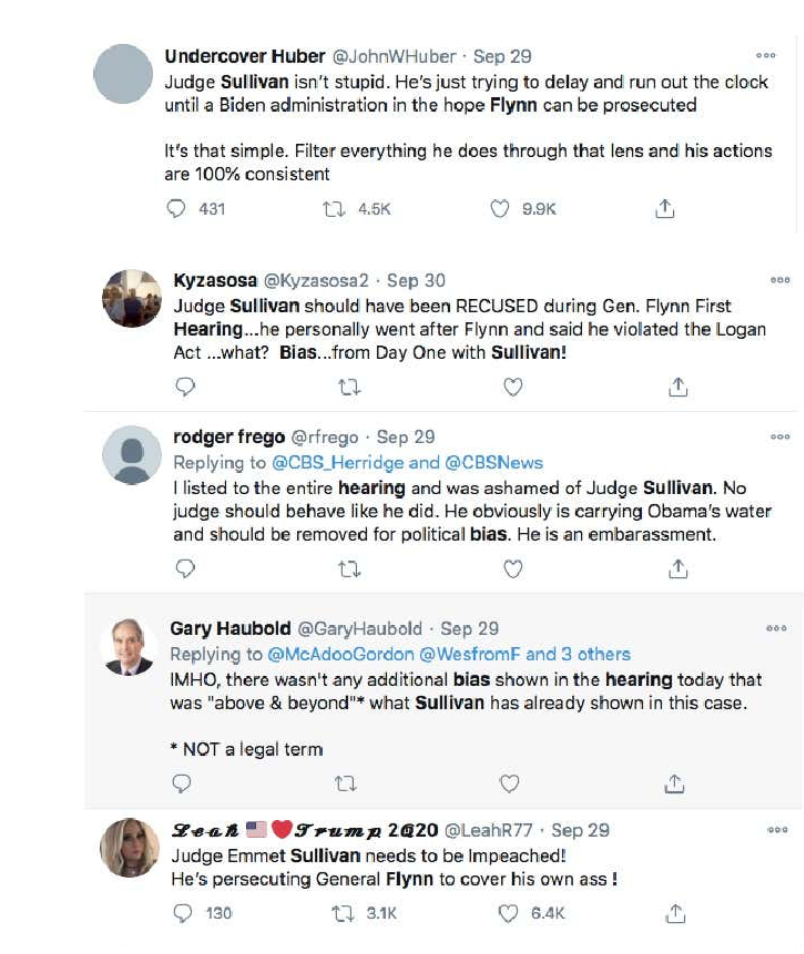

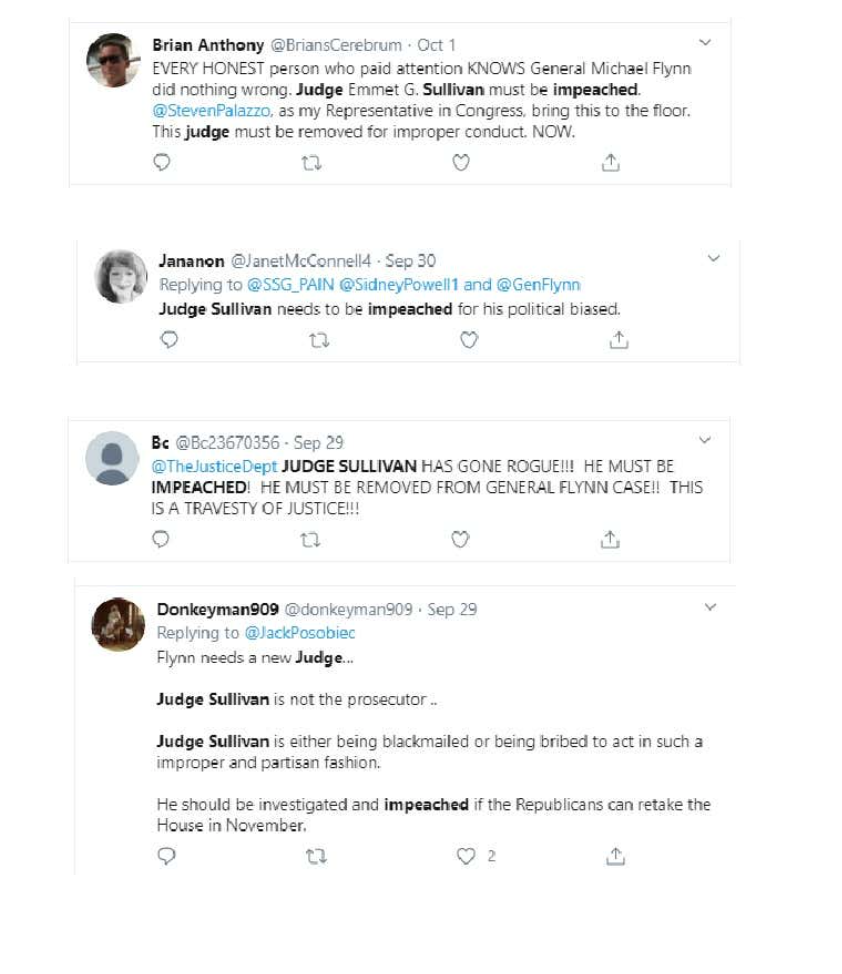
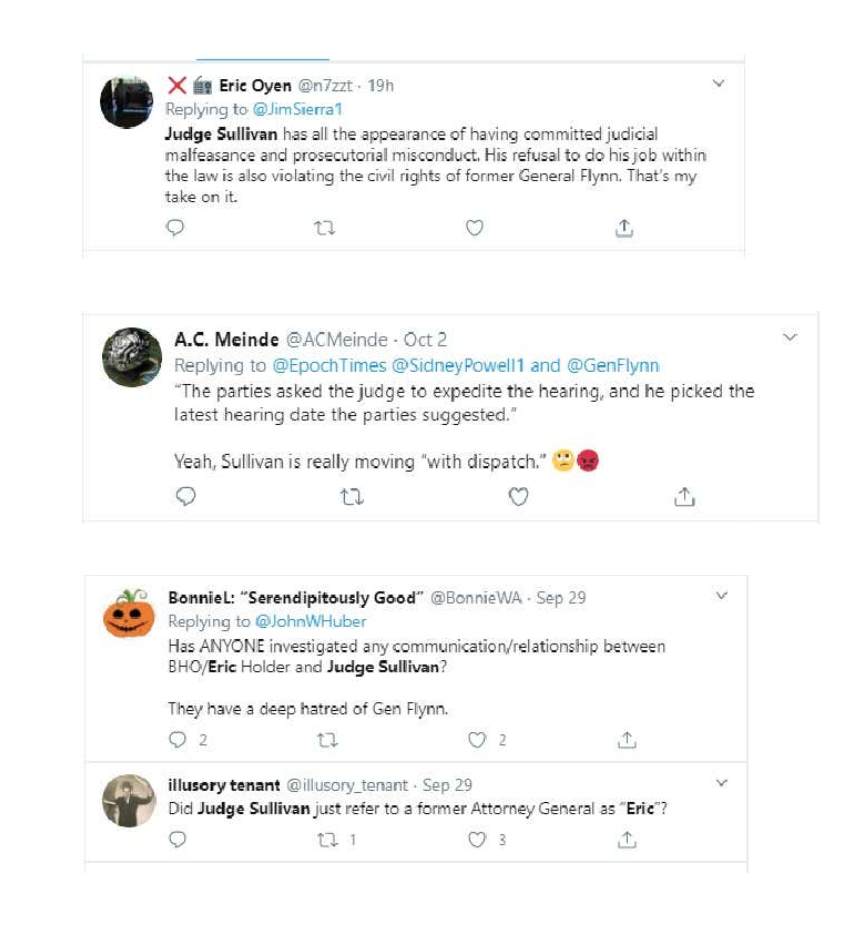
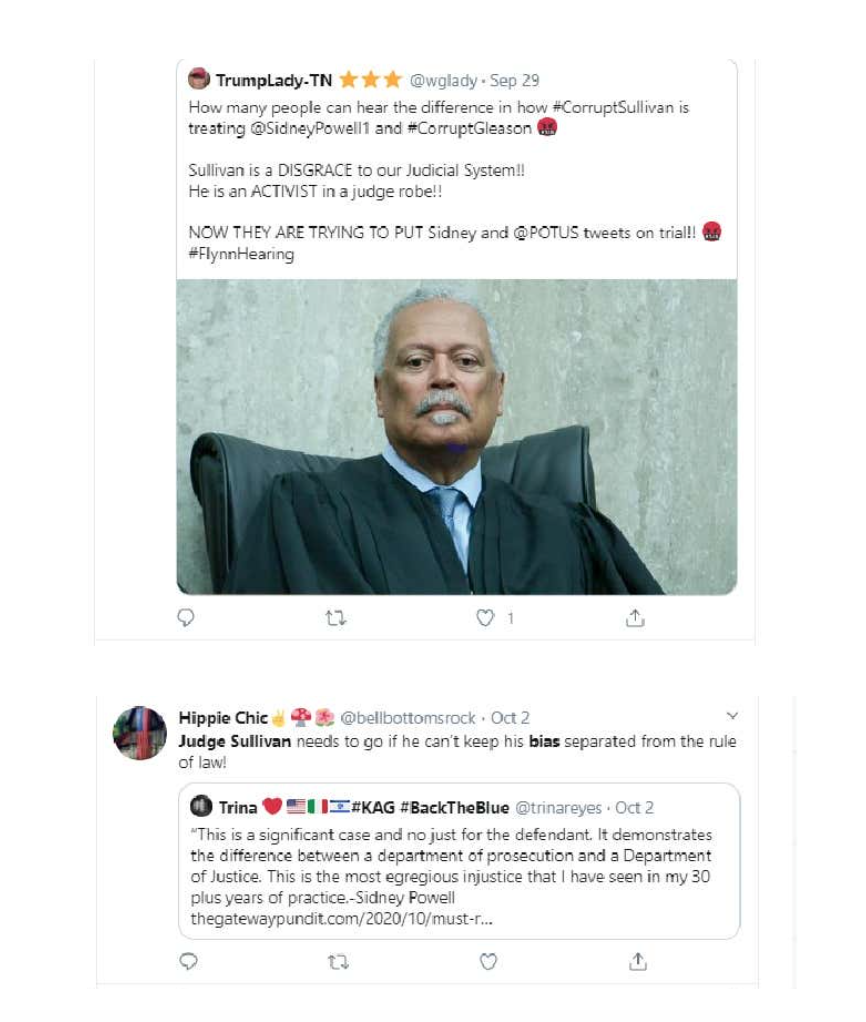

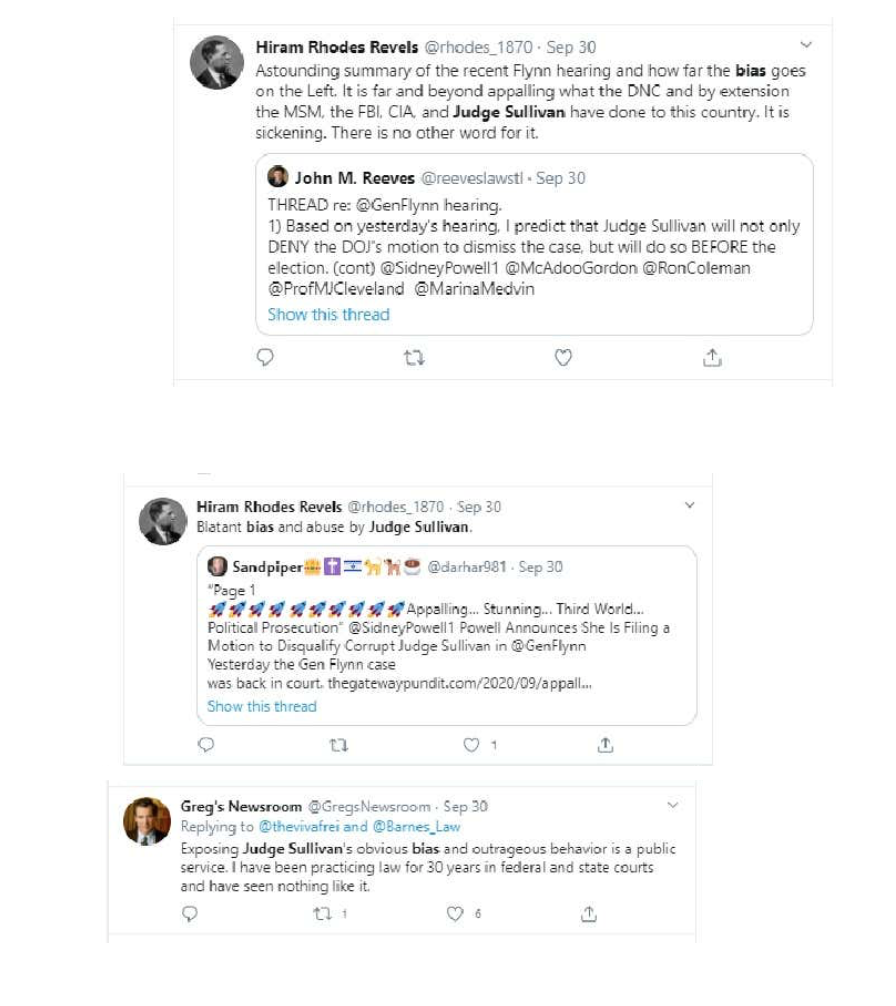
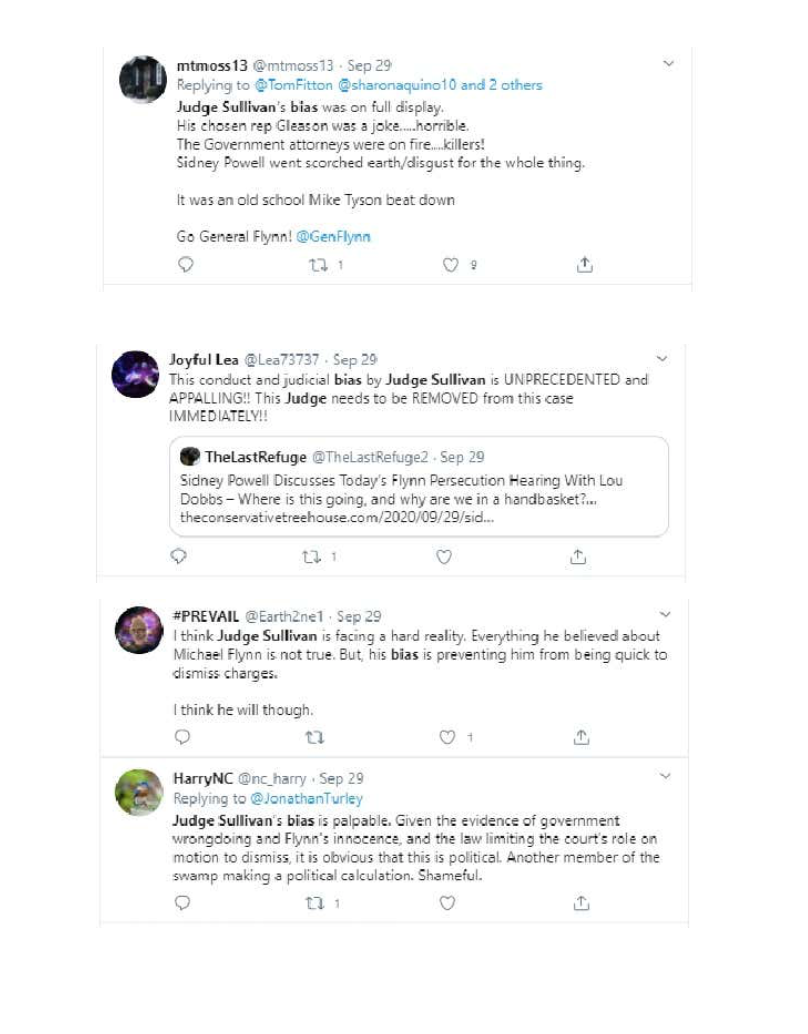
Many of the tweets had no likes or retweets.
[Image via U.S. District Court for the District of Columbia]
Have a tip we should know? [email protected]